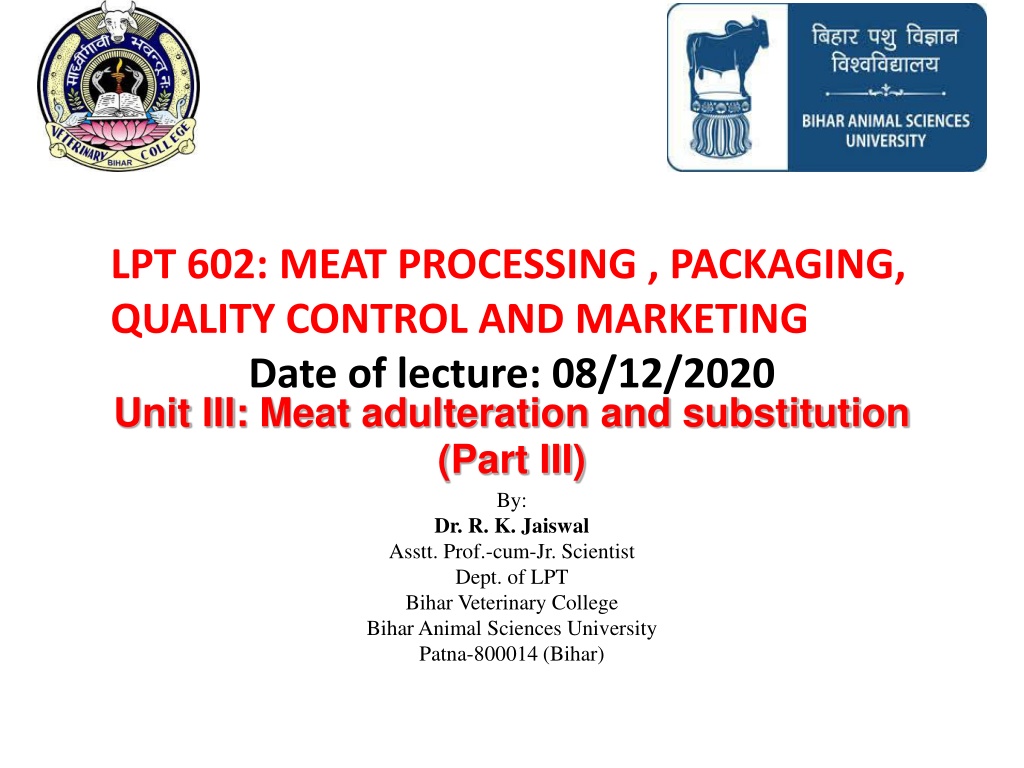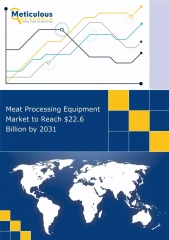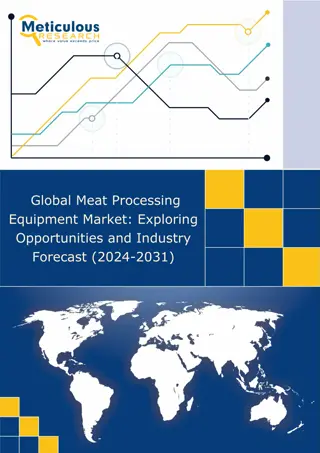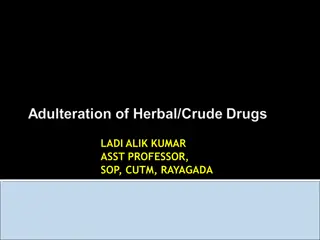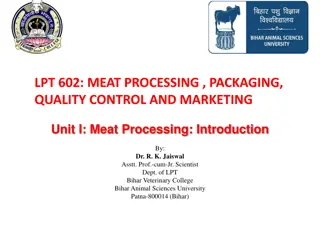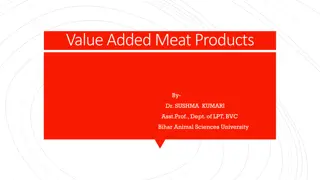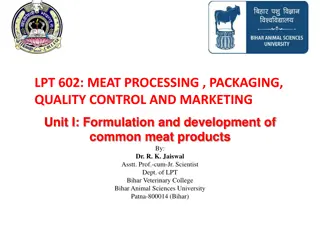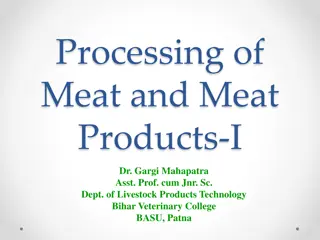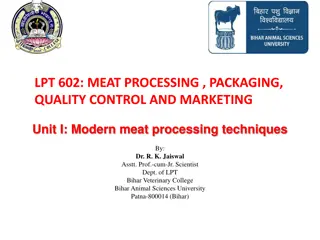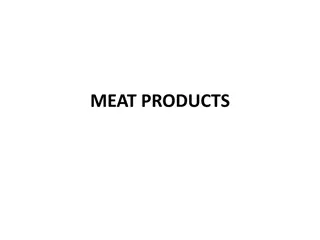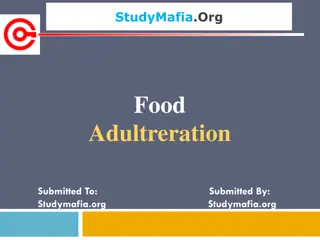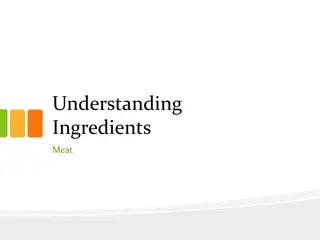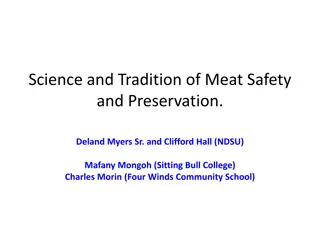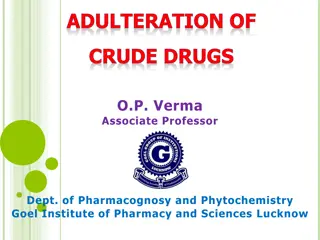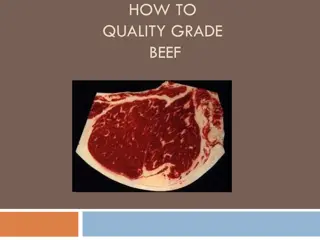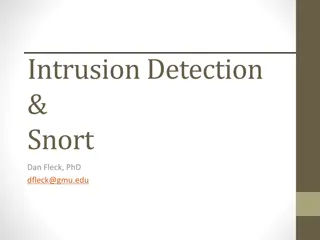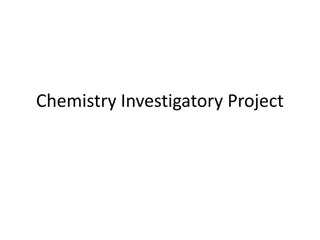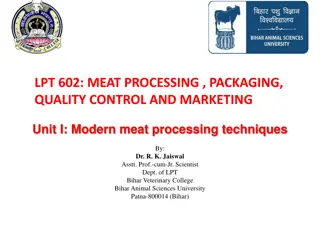Understanding Meat Adulteration: Chemical Methods for Detection
Explore the chemical methods used in meat processing to detect adulteration, including tests for glycogen content, linoleic acid levels, iodine value, refractive index, and myoglobin content in different animal species. Learn how these tests help identify potential adulteration and ensure meat quality control.
Download Presentation

Please find below an Image/Link to download the presentation.
The content on the website is provided AS IS for your information and personal use only. It may not be sold, licensed, or shared on other websites without obtaining consent from the author. Download presentation by click this link. If you encounter any issues during the download, it is possible that the publisher has removed the file from their server.
E N D
Presentation Transcript
LPT 602: MEAT PROCESSING , PACKAGING, QUALITY CONTROL AND MARKETING Date of lecture: 08/12/2020 Unit III: Meat adulteration and substitution (Part III) By: Dr. R. K. Jaiswal Asstt. Prof.-cum-Jr. Scientist Dept. of LPT Bihar Veterinary College Bihar Animal Sciences University Patna-800014 (Bihar)
CHEMICAL METHODS The chemical tests consist of the determination of Content of glycogen in flesh Percentage of linoleic acid in fat Amount of iodine absorbed by unsaturated fatty acids in fat Refractive index of fat Myoglobin content in meat
Test for Glycogen Content of Meat The horseflesh is richer than the flesh of other food animals in glycogen Horse 0.5 to 1.0 % Beef - 0.0 to 0.5% Pork and mutton - nil Disadvantages The flesh should be tested for the content of glycogen soon after the slaughter Liver of all food animals especially pig liver contains more glycogen when they are used in sausage making it gives a high percentage. So care must be taken in interpretation of results.
Linoleic acid content Horse fat contains 1-2% linoleic acid. Linoleic acid content in other animals' fat is not more than 0.1%. Thus adulteration of lard or beef and mutton fat with horse fat can be identified by estimation of the linoleic acid concentration.
Iodine value Estimation of iodine value is a valuable test for the detection of horse fat. Iodine value is the amount of iodine absorbed by the unsaturated fatty acid present in the fat. Good lard has an iodine value of 66. The iodine value of the fat from various food animals is: Horse - 71-86 Ox (cattle) - 38-46 Sheep - 35-46 Pig - 50-70
Refractive index Refractive index is another valuable test for the detection of fat of different animal species. Fat is liquefied by heat and converted into oil for estimation of refractive index. All liquids including oils possess a specific refractive index. Horse - 53.5 Ox - less than 40 Pig - not above 51.9
Myoglobin content The myoglobin content of different species is: Beef - 0.30 to 1% Pork - 0.06 to 0.40% Poultry - 0.02 to 0.18%
